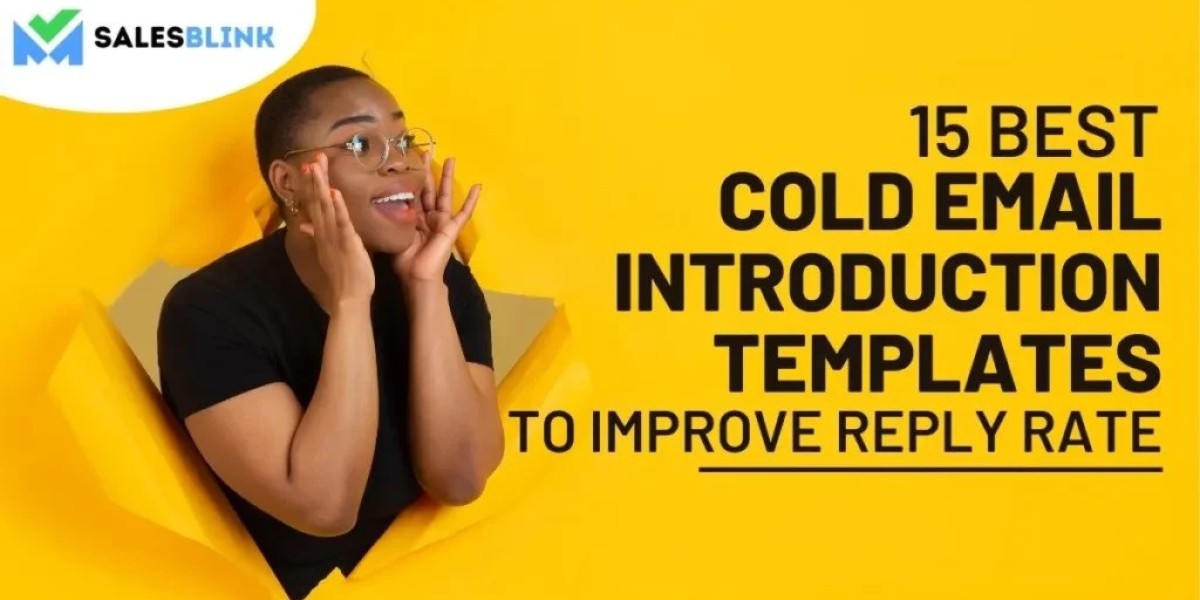Cold emailing is an essential strategy in the world of sales and marketing, offering a direct way to reach potential clients and partners. However, the key to effective cold emailing isn't just in the message you send but in how you structure that message. This is where cold email templates come into play. By using well-crafted templates, you can streamline your outreach process, increase response rates, and, ultimately, achieve your sales goals.
In this comprehensive guide, we'll explore everything you need to know about cold email templates, including why they matter, how to create them, and tips for making them work for you. If you're looking to elevate your cold email game, read on.
Why Cold Email Templates Matter
Cold emailing can be a time-consuming process, especially when you're reaching out to large numbers of potential clients or leads. Writing each email from scratch is not only inefficient but also increases the chances of inconsistencies in your messaging. Cold email templates solve these problems by providing a standardized format that you can quickly customize for each recipient.
Benefits of Using Cold Email Templates:
1. Consistency: Ensure your messaging is consistent across all outreach efforts.
2. Efficiency: Save time by using a ready-made structure that can be easily tailored to different recipients.
3. Scalability: Easily manage large outreach campaigns without sacrificing quality.
4. A/B Testing: Test different approaches to see what works best and refine your templates accordingly.
5. Improved Response Rates: Well-crafted templates can significantly increase your chances of getting a positive response.
How to Create Effective Cold Email Templates
Creating cold email templates requires a mix of strategy, creativity, and a deep understanding of your audience. Here’s a step-by-step guide to help you craft templates that resonate with your prospects.
1. Start with a Clear Objective Before you start writing, it's important to define the goal of your email. Are you trying to set up a meeting, introduce a product, or follow up on a previous conversation? Knowing your objective will guide the rest of your email content.
2. Craft a Compelling Subject Line The subject line is the first thing your recipient will see, so it needs to grab their attention. Keep it short, relevant, and intriguing. Avoid spammy words and make sure it aligns with the content of your email.
Example: "Increase Your Sales with These Proven Strategies"
3. Personalize the Introduction Even though you're using a template, personalization is key. Address the recipient by name and reference something specific about their company or role. This shows that you’ve done your research and aren’t just sending out a mass email.
Example: "Hi [Recipient Name], I noticed that your company [Company Name] has been expanding its product line recently..."
4. Highlight the Value Proposition Your recipient needs to know what's in it for them. Clearly outline the benefits of your offer and how it can solve a problem or fulfill a need they have. Be concise and focus on value rather than features.
Example: "Our solution can help you streamline your sales process, saving you time and increasing your conversion rates."
5. Include a Call to Action (CTA) Your email should have a clear next step. Whether it’s scheduling a call, signing up for a demo, or downloading a resource, make sure your CTA is specific and easy to follow.
Example: "Are you available for a 15-minute call next week to discuss how we can support your sales strategy?"
6. Keep It Short and Sweet Busy professionals don’t have time to read lengthy emails. Keep your message concise, focusing on the most important points. Ideally, your email should be no longer than 3-4 short paragraphs.
7. Close with a Professional Signature End your email with a professional closing and include your contact information. This not only makes it easy for the recipient to get in touch with you but also adds credibility to your message.
Example:
"Best regards,
[Your Name]
Sales Blink
[Your Contact Information]"
Examples of Cold Email Templates
Here are a few examples of cold email templates tailored for different scenarios. Feel free to adapt them to fit your specific needs.
1. Initial Outreach Template
Subject: "Boost Your Sales with [Your Product/Service]"
Hi [Recipient Name],
I hope this email finds you well. My name is [Your Name], and I’m with Sales Blink. I’ve been following [Company Name]’s growth and thought our [Product/Service] could be a great fit for your team. Our solution has helped companies like yours [Insert Key Benefit], and I’d love to show you how it can do the same for you.
Are you available for a quick call this week to discuss?
Best regards,
[Your Name]
Sales Blink
2. Follow-Up Template
Subject: "Just Following Up – [Your Product/Service]"
Hi [Recipient Name],
I wanted to follow up on my previous email about [Your Product/Service]. I know things can get busy, so I wanted to see if you had a chance to consider how our solution could benefit [Company Name].
I’m happy to provide more information or answer any questions you might have. When would be a good time for us to connect?
Best regards,
[Your Name]
Sales Blink
3. Referral Request Template
Subject: "Can You Help Me Connect with [Prospect/Company]?"
Hi [Recipient Name],
I hope you’re doing well. I’m reaching out because I’m looking to connect with [Prospect/Company], and I thought you might be able to help. At Sales Blink, we specialize in [Brief Description of What You Do], and I believe our services could be of great value to them.
If you’re able to make an introduction, I’d be incredibly grateful. If not, no worries at all – I appreciate your time!
Best regards,
[Your Name]
Sales Blink
Tips for Optimizing Cold Email Templates
Even the best cold email templates can benefit from ongoing refinement. Here are some tips to help you get the most out of your templates:
1. Test and Optimize Regularly test different versions of your templates to see which ones yield the best results. Pay attention to metrics like open rates, click-through rates, and response rates to guide your optimizations.
2. Segment Your Audience Not all recipients are the same, so it’s important to segment your audience and tailor your templates accordingly. For example, you might have different templates for C-level executives versus mid-level managers.
3. Focus on Value, Not Features Recipients are more interested in how your product or service can solve their problems than in a list of features. Focus on the benefits and value you bring to the table.
4. Personalize Where Possible Even when using templates, personalization can make a big difference. Customize each email to include the recipient’s name, company name, and any relevant details that show you’ve done your homework.
5. Keep Your Language Conversational A cold email should feel like a one-on-one conversation rather than a sales pitch. Use conversational language and avoid jargon or overly formal phrasing.
Conclusion
Cold email templates are a powerful tool for any sales professional, enabling you to scale your outreach efforts while maintaining quality and consistency. By following the strategies and examples outlined in this guide, you can create cold email templates that not only save you time but also increase your chances of success.
Remember, the key to effective cold emailing is not just in what you say but in how you say it. With well-crafted cold email templates, you can confidently approach new prospects, nurture leads, and close more deals.
If you’re looking for a way to streamline your cold email efforts, consider leveraging the power of Sales Blink. Our platform offers a range of tools and features designed to help you create, manage, and optimize your cold email templates, ensuring that your outreach campaigns are as effective as possible. Start your journey to sales success with Sales Blink today!









